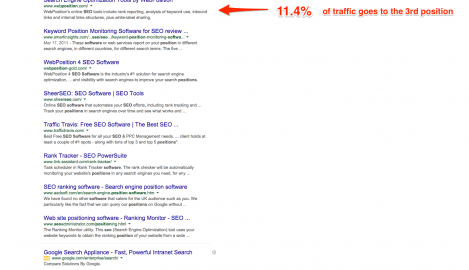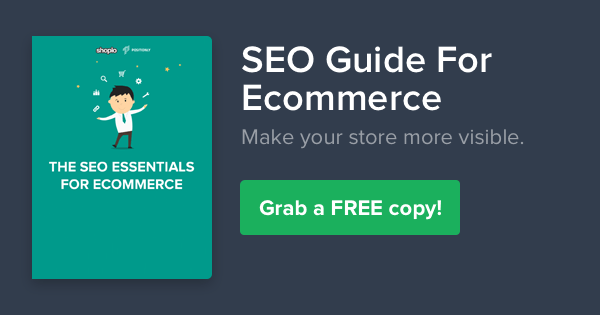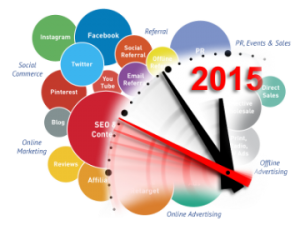Purchasing online entails that a buyer is not able to touch, try out or verify an item he sees online. Nevertheless, ecommerce stores are more and more popular every day. The recent Google study says that customers have gone “from midnight snacking to midnight shopping”. Online shopping has become a form of spending free time and also a great way to save some time and money.
For ecommerce business owners popularity of buying online (also via mobile devices) means two things: first of all, there’s no need of educating customers about the pros of purchasing on the web, but on the other hand – and this is my second point – growth of the online shopping industry means not only more digital buyers, but also more competition in the online ecosystem.
This is why search engine optimization (SEO) should be a part of every shop’s marketing strategy. To help you Guys with arranging your online stores in a way that is both customer and SEO-friendly, I’ve prepared this post. You’ll learn the basics about website optimization. For those of you who want to learn more about ecommerce SEO, we’ve prepared something special at the end of the post!
Ecommerce SEO
Search engine optimization (SEO) is the practice of getting a website rank higher in the search engine results pages (SERPs). When a user types a word or phrase into a search engine, a sophisticated algorithm returns a list of web pages. They are all ranked so that the most relevant results appear at the top of a page. The most traffic – more than 60% – goes to the first three organic positions on the first SERP.
The numbers are as following:
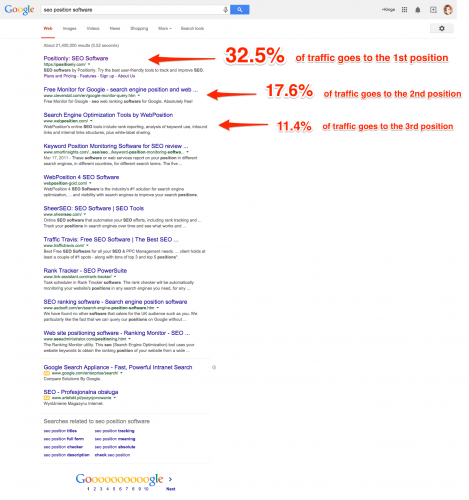
It is also good to keep in mind that an overwhelming majority – 91.5% – of all traffic is gathered by the first page of search results according to Chitika’s study. It’s not hard to guess that brands compete with each other to be featured on the first page of SERPs as it means more visibility, more visitors and more profits.
Of course the more attractive to search engine algorithms your page is, the higher it will rank in SERPs and the more visible it will be to people. It’s worth playing this game, isn’t it?
On-Page Factors
The first place to start with SEO is on your ecommerce website itself. Search engine algorithms look for several factors when they crawl through each page of your site. The most important ones are:
- site structure
- keywords
- page URL
- alt-text of images
- title tag
- meta-descriptions
- content
- internal links
The content that you publish on your store’s website tells the algorithm how relevant a page is to a user who is searching for a particular term. Search engines scrutinize your site for signs of quality or attempts to manipulate the search algorithm. So the best way to do SEO is to use only the white hat techniques.
Site Structure
Structural elements of your site and the way pages link to each other also affect SEO. Search engines go through a link structure to find and index pages. If your site is structured well, all pages and subpages will be easily found by search engine crawlers.
A clear website structure is important not only in terms of SEO, but most of all in terms of good user experience. The aim is to build an online store where clients can easily find products and information they came for.
Keywords
There are different types of keywords, as well as different types of search queries that people use to find products they are looking for. SEO is pretty much based on keywords. Finding out what words searchers use to find online stores similar to yours is the key to success.
After doing a profound research you’ll have a list of relevant keywords in your hand. You can then start the optimization process which basically means placing keywords throughout the whole website. The main keywords should be used in titles and repeated naturally in the content, others should be placed in image tags and meta descriptions.
Page URL
One easy way to improve SEO on your ecommerce site is to ensure that each URL is SEO-friendly, which means that it should include the main keyword that the page is targeting.
URL stands for uniform resource locator, it is a web address of a single web page. URLs are displayed in a web browser and on SERPs. There are two types of web addresses: static and dynamic.
A static URL looks like that:
beardshop.eu/category/take-care-of-yourself
A dynamic one can look like this:
beardshop.eu/category/?p=0254007
While search engines can easily understand both of the URLs, for human beings dynamic URLs are completely illegible. A searcher can’t define what can be found on a particular website. Not to mention that you miss the chance to put one of your relevant keywords on URL, if you choose a dynamic web address.
When it comes to page URLs, there are a few good practices that are worth keeping in mind:
- it’s better to use hyphens (-) instead of underscores (_). When you use underscores to separate words in an URL name, Google will read it as one single word. For instance: take_care_of_yourself will be treated as takecareofyourself.
- keep an URL address brief, descriptive and relevant – a visitor at a glance should be able to tell what the website is all about. Let’s take this URL as an example: beardshop.eu/page/shipping-and-returns. It’s not hard to guess for a searcher that this particular webpage contains terms and conditions of shipping and possible products returns.
- pick the most important keyword and use it in the URL address to optimize your web page. Let’s stick to Beard Shop as an example. Its owner already did a great job with placing the main keyword – beard – in the shop’s name and in the URL. However, if he’d like to optimize also for other keywords like: beard products or beard care, the possible URLs of other web pages could look like this: beardshop.eu/category/beard-care/soaps-and-shampoos
Alt-text of Images
Search engines don’t read images, they read alt-text instead. You should use alt-text to help engines better understand the meaning of an image and what it represents. While describing an image, don’t forget to use some of your focus keywords.
Title-tag and Meta-description
Title-tag should define a site’s content in a concise and clear way. You should keep it short, max 50-60 characters. Be sure to include at least two of your most important keywords along with your brand’s name.
A title tag plays a significant part in SEO as it appears in the search engine result pages (SERPs), on external websites and directly in browsers.
Let’s take Beard Shop as an example. This is how the title and the meta-tag presents on a result page:
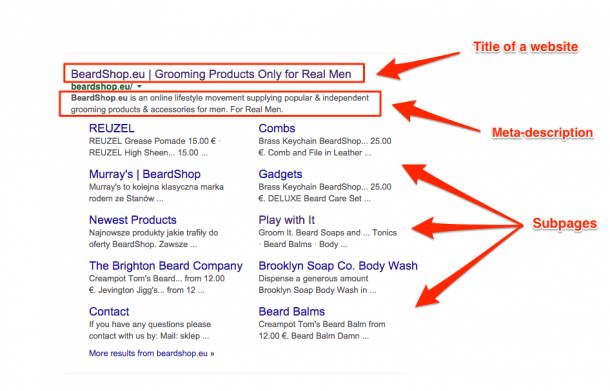
As you can see above a meta-description is a short paragraph which is displayed under a title tag on SERP.
Sometimes a short title is not enough to fully communicate what your ecommerce business is all about. Meta-description gives you the opportunity to introduce your brand before a searcher pay you a visit and actually see the products you offer.
The optimal length of a meta-description is between 150-160 characters. While creating a copy is good to be as much creative as you can. A boring description can decrease a click through rate and bring you less visitors.
Links
Internal links – links that point to other pages of your site – are an important part of on-page SEO. They help search engine algorithms to crawl through your site, indexing each page as they go. We will be talking a lot more about internal linking while discussing information architecture in chapter four.
Content
Content on your store website if optimized well can make a huge difference when it comes to making your business more visible in search engines. The keywords are one of the most important factors when it comes to your content optimization. You should pick only the most relevant ones and use them throughout the whole website.
A search engine optimized content should look like the example below:
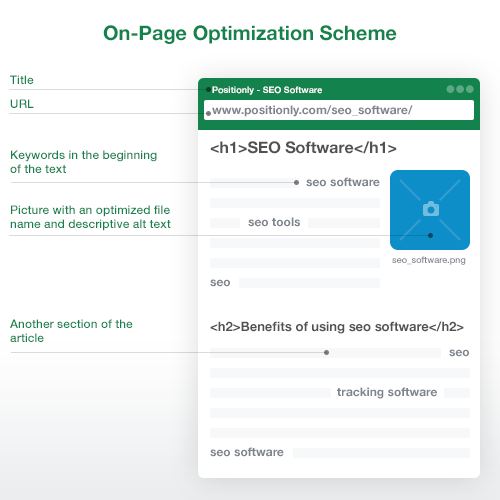
Off-page Factors
Off-page SEO techniques involve building links from other parts of the web to your site. In the past, ecommerce site managers would scatter links to their site all over forums, directories, and comments sections, as well as buy links on other sites. These link building techniques are penalized by search engines these days, which means that you need to take a different approach.
Current off-page SEO techniques focus on building relationships, not links. It’s better for you to reach out to your customer base through social media. If you create entertaining content and share it with your followers on Facebook and Twitter, the customers you are interacting with may share the content on their blogs or in other communities – this way links will be created naturally.
Each time someone visits your store from an external website you just gained a backlink! And you should definitely keep going and try to receive more of them. The reason why backlinks are so important in SEO is that search engines determine popularity of a website by a number of backlinks it has gained.
Bonus: The ebook has been translated into Polish. All the Polish folks can grab their free copy here.
(437)
Report Post